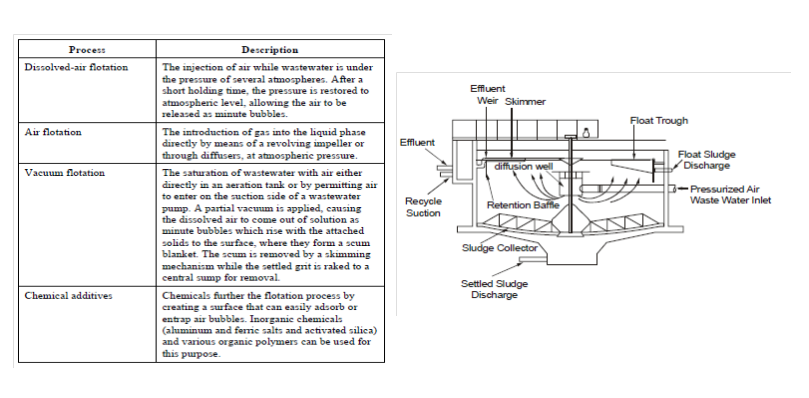Flotation
Flotation is a unit operation used to erase solid or liquid particles from a liquid phase through introducing a fine gas, commonly air bubbles. The gas bubbles either adhere to the liquid or are trapped within the particle structure of the suspended solids, increasing the buoyant force of the combined particle and gas bubbles.
Particles which have a higher density than the liquid could therefore be made to rise. Within wastewater treatment, flotation is used majorly to remove suspended matter and to concentrate biological sludge. The main benefits of flotation over sedimentation are that extremely small or light particles can be erased more completely and within a shorter time. At one the particles have been floated to the surface, they could be skimmed out. Flotation, as presently practised in municipal wastewater treatment, uses air completely as the floating agent. In addition, several chemical additives could be introduced to enhance the removal procedure. Several flotation methods are elaborates in Table 2, although a classical flotation unit is described in Figure 8.
Table 2 : Flotation Methods

Figure 8: Typical Flotation Unit